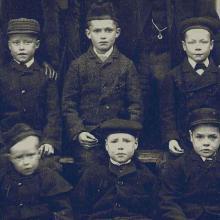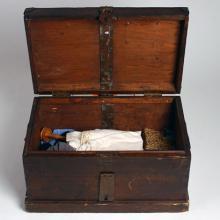Research enquiry into the history of social work and social welfare is a vital and ongoing scholarly activity, underpinning our understanding of the past, and illuminating present day practice and policy. 'Memory institutions' like libraries and museums have a key role to play in preserving, and providing researchers with access to, original cultural heritage material
Through their exhibition work curators of specialist collections also have a role in interpreting and narrating the stories of social welfare, giving voice to the recipients of social work services: the poor, the underprivileged, the dispossessed, the immigrant, and the 'other'. In the 21st century digital technology is transforming the work of cultural heritage institutions.
This article explores a project involving the 'virtualisation' of a social work museum exhibition on the migration of 'Home Children' from Scotland to Canada in the late 19th and early 20th centuries; and the digital preservation of historical assets held in the archive of one of the social care organisations involved in the migration of the children.
The purpose of the project was threefold: to provide public access to the historical assets for research and education; to preserve the historical assets before they were damaged any further by prolonged and sub-optimal storage conditions; and to repurpose the exhibition material to retell the story of Victorian child migration with new digital media.
The Golden Bridge, child migration from Scotland to Canada 1869-1939.




